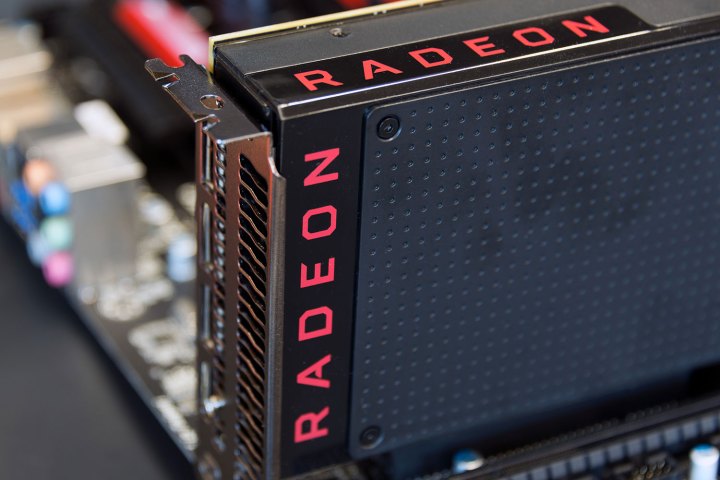
You read that right. Reports have surfaced that select Radeon RX 480 4GB cards actually have 8GB of physical memory installed, with the second half switched off by the card’s BIOS. One example is the PowerColor RX 480 4GB, which reportedly uses K4G80325FBHC25 chips with 8Gbit (1GB) densities provided by Samsung, totaling 64Gbit made physically available on the card. In other words, the 4GB card actually has 8GB.
Another card reportedly with 8GB of physical memory, but only using half of that, is the XFX RX 480 4GB model, which unsurprisingly appears to be out of stock on Newegg ($199). Like the PowerColor offering, the XFX card uses the same amount of Samsung 8Gbit chips, packing 8GB of physical memory.
It seems that customers can get more hardware for the money by purchasing the $199 4GB cards and waiting on firmware to open up the second half of memory. Wait is the operative word, though. So far, no unofficial method of unlocking the extra memory is available yet.
So why are these cards selling as 4GB models? There’s a theory that AMD wanted $199 solutions to be made available during the official Radeon RX 480 launch as the company promised. However, production of lower density memory chips for the 4GB model was still ramping up, so AMD green-lit 8GB models flashed with firmware locking the card at 4GB.
Right now, it’s easy to presume that most initial RX 480 4GB cards made available at launch have 8GB of physical on-board memory. Thus, customers owning a first-wave Radeon RX 480 4GB card will likely see an unofficial release of firmware that will enable the full 8GB. However, customers will need to closely examine their card first to make sure 8GB is actually physically present before attempting a firmware flash.
There’s no doubt that AMD and its partners will distribute 4GB Radeon RX 480 cards packing the correct amount of physical memory rather soon. After all, AMD will only take the financial hit for so long. What will be interesting to see is how and when altered, unofficial firmware will be distributed, and how AMD and its partners will deal with the memory unlocking hack.



